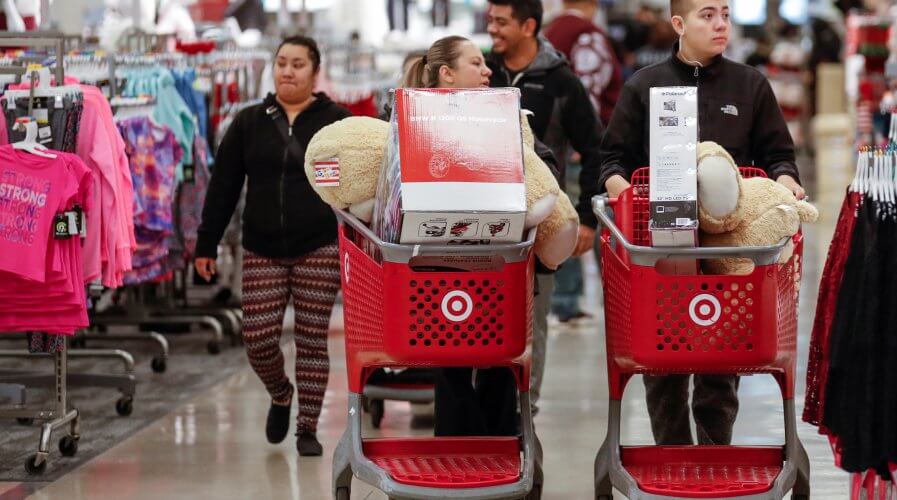
Customers navigate through the aisles during the Black Friday sales event on Thanksgiving Day at Target in Chicago, Illinois, U.S. Source: Reuters
Black Friday sales break records, but not bigger than 11.11’s success
THIS PAST WEEKEND, retailers in the United States scored record-breaking revenues during the Black Friday sales over the Thanksgiving holiday weekend as one of the world’s biggest markets kicked into high gear for the Christmas shopping season.
Overall, US retailers raked in as much as US$7.9 billion in online sales during Black Friday and Thanksgiving, marking a 17.9 percent increase from the previous year, according to Adobe Analytics data as reported by Reuters. Analysts are forecasting that Cyber Monday sales will bring in an additional US$6.6 billion, making it the most lucrative online shopping day in US history.
However, those numbers are paltry compared to the staggering US$25 billion that e-commerce giant Alibaba raked in, or the US$19.14 billion earned by rival JD.com.
The huge sums are markers that sentiments are increasingly shifting in the favor of Asia’s biggest sale on Singles’ Day, but also signs that the holiday season is starting earlier and earlier in the year.
However, the rise of Alibaba and JD.com’s success as well as the increasing relevance of Amazon, suggests that what will truly define this era of Black Fridays is online shopping options. Each and every single one of these companies, as well as retailers the world over, are bulking up the robustness of their e-commerce platforms, and improving on the load times of their channels which are either the sole platform of their business or necessary accompaniments to their brick-and-mortar stores.

The Mercedes-Benz Arena in Shanghai where Alibaba hosted their 11.11 gala. Source: Alizila
According to commerce marketing firm Criteo, as reported by Reuters, around 40 percent of Black Friday purchases were made on mobile phones were made this year compared to 11 percent in 2016. The media outlet reported that the atmosphere in physical locations were muted, based off of anecdotal evidence.
These last few years have seen a rise in “webrooming” and “showrooming” trends, where consumers either browse on- or offline, before making their final purchases on the opposite platform. In response, businesses have gotten savvier with figuring out what to do with their stores by turning them into full-on experiences that take advantage of consumers’ emotive responses to shopping, while Alibaba is wielding the might of their “New Retail” strategies.
Despite lukewarm retail sentiments, however, retail research firm ShopperTrak said that Black Friday store traffic had only fallen by one percent, suggesting that brick-and-mortar might not be dead-and-going as many had predicted.
“There has been a significant amount of debate surrounding the shifting importance of brick-and-mortar retail,” Brian Field, ShopperTrak’s senior director of advisory services, said to Reuters.
“The fact that shopper visits remained intact on Black Friday illustrates that physical retail is still highly relevant and when done right, it is profitable.”
READ MORE
- Success during 11.11 festival showcases Alibaba’s powerhouse computing tech
- Alibaba’s 11.11 shopping festival hauls in staggering $25b revenue
- E-tailers up their game as Singles’ Day nears
- China’s e-commerce giants employ advanced tech for Double Eleven festival
- China consumer group urges govt to punish firms for ‘fake’ discounts on Singles’ Day




